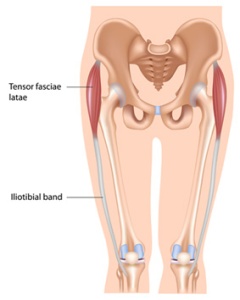Fibromyalgia International Awareness Day 2020
Chronic pain is more common than most people realise. It affects between 20 – 50% of people in the UK although most are able to carry on with daily activities.
Fibromyalgia is a rheumatic syndrome characterised by chronic widespread pain, often associated with fatigue, unrefreshed sleep and cognitive problems.

Effective management of fibromyalgia requires a multi factorial and proactive approach to help settle pain down and allow the patient to take responsibility for self-care. There are several physiotherapy modalities which can be utilised to assist this.
Activity and exercise is helpful for chronic pain conditions but the exact type is not so important. What is important is that the exercise you do is something you enjoy, and that you are able to do regularly. If you are not sure where to start, a Physiotherapist can assess you and create an appropriate exercise programme for you to follow. It is important to get the intensity of exercise correct to avoid flaring up pain symptoms.
Flare-ups in pain are normal in conditions like Fibromyalgia. The usual symptoms you experience may change from day to day and there will be times when they increase. It is helpful to plan for these periods of flare-up so that you can manage through them and keep doing the things that are important to you. This maybe where some additional physiotherapy input maybe helpful to reduce pain (soft tissue massage, advice on exercises, acupuncture, floatation therapy) to get you back on track with your regular exercise regimes.
A 57 year old patient with Fibromyalgia says “I would encourage anyone who doesn’t do much activity to choose something they enjoy, to start slow and build up. Sometimes you feel tired and it’s the last thing you want do but the important thing is to stick with it, and you do see the benefits over time.”
At Emma James Physiotherapy we have expert Physiotherapists who are able to assess and treat Fibromyalgia and other chronic pain conditions, and help patients effectively manage their symptoms.

Lisa
x
Blog post by Lisa
Senior Physiotherapist
MSc MACP MHCPC MCSP
Emma James Physio


 Moderate activity will raise your heart rate, and make you breathe faster and feel warmer. One way to tell if you’re working at a moderate intensity level is if you can still talk, but not sing. Examples of moderate intensity activities include brisk walking, water aerobics, riding a bike, dancing, doubles tennis, pushing a lawn mower, hiking.
Moderate activity will raise your heart rate, and make you breathe faster and feel warmer. One way to tell if you’re working at a moderate intensity level is if you can still talk, but not sing. Examples of moderate intensity activities include brisk walking, water aerobics, riding a bike, dancing, doubles tennis, pushing a lawn mower, hiking. Most moderate activities can become vigorous if you increase your effort.
Most moderate activities can become vigorous if you increase your effort. To get health benefits from strength exercises, you should do them to the point where you need a short rest before repeating the activity. It is best to get a
To get health benefits from strength exercises, you should do them to the point where you need a short rest before repeating the activity. It is best to get a 
















Recent Comments